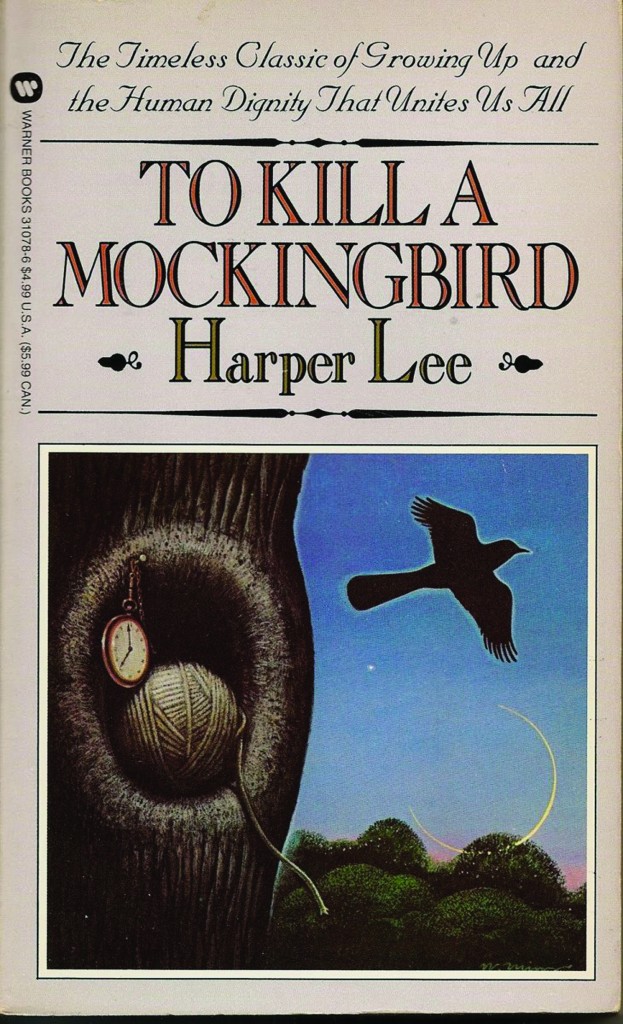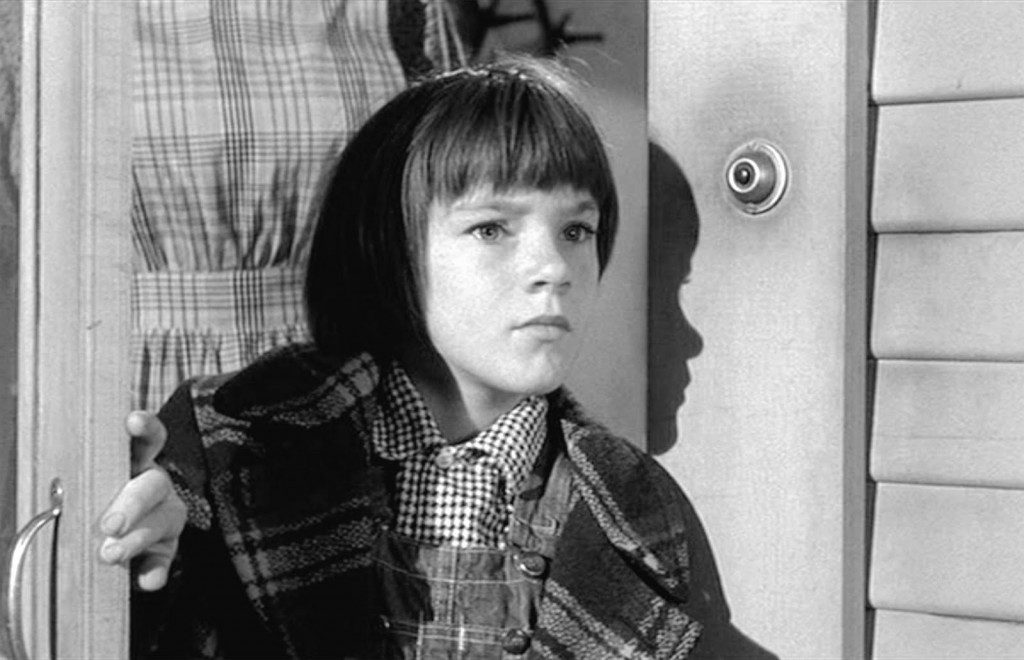“You never really understand a person until you consider things from his point of view… until you climb into his skin and walk around in it.” (Lee)

Fall has officially arrived… even in L.A. where the temperature has dropped 10 degrees (laugh all you want, East Coasters… I took my cashmere out of storage). The change in the air brings with it nostalgia for good ole fashioned school days. My cure? Reading a literary classic—one that calls for concentration and a good classroom discussion. I chose To Kill a Mockingbird by Harper Lee.
Enjoyment was my only objective, but I came out of it with a renewed desire to learn. The issues that Lee tackles are historical, but many of the insights into race and society continue to affect our world today… and the lessons in growing up and becoming oneself are unchanging.
Refresher Course
Told from the perspective of Jean Louise “Scout” Finch as an adult looking back, she introduces herself as a six-year-old girl in Maycomb County. Scout navigates the issues of race and gender in 1930s Alabama through her relationships and interactions with her older brother Jem, noble father Atticus, beloved cook Calpurnia, and persnickety aunt Alexandra.
Our foggy memory has most of us remembering only two things about the book: Boo Radley and a controversial criminal case involving a black man. With summers spent with Jem and Scout’s loyal friend Dill (based on Lee’s real-life childhood neighbor Truman Capote), hours of “playing” Boo Radley (which meant reenacting an infamous murder that their mysterious recluse neighbor supposedly committed), and altercations with the Ewell family and their supporters, Lee weaves an intricate plot that tells the simple story of these two “ghost” characters and their effect on Scout and the community she lives in.
The novel spans three years during which we see the children grow and change, the adults adapt to the personalities and opinions of these little human beings. Each chapter reads like a short story that leads to another that leads to another and, while you get lost in Lee’s words, you don’t realize their hold on you.
The Race Card
“Atticus had used every tool available to free men to save Tom Robinson. But in the secret courts of men’s hearts, Atticus had no case. Tom was a dead man the minute Mayella Ewell opened her mouth and screamed.”
For years this novel has been required reading for students, with the issue of race central to discussions. Set in a time of unchallenged racial segregation deep in the South, the novel was written by a Southern woman and published in 1960 prior to the peak of the Civil Rights movement. Over 50 years later, elements of the story still reflect the American experience.
During a trip to visit their uncle Jack at Finch landing, Scout overhears a telling conversation about the moral dilemma Atticus faces in taking Tom Robinson’s case (a refresher: Tom is charged for the rape and assault of Mayella Ewell—a capital offense at the time). Atticus was appointed to defend Tom, but Scout later learns that it was Atticus’s intention to actively defend Tom that turned much of the town on Atticus and his family. They live in a time when the “white man always wins.” Decades later, the issue of mandated segregation is not one we face in America yet the issue of discrimination is just as prevalent.
There are two events in the book that speak to today’s evolving society. Calpurnia (Cal) brings Jem and Scout to her church on a Sunday when Atticus is unable to attend service with them. At her black church, they experience “reverse racism” when one of the members of the community points out that they do not belong, that they have their own church. In today’s America, law may not segregate public places, but many communities are segregated by choice, separating people of different socioeconomic backgrounds (in which race inadvertently places a historical role).
In another instance, Jem teaches Scout about mixed race children and how they don’t fit in anywhere saying “…colored folks won’t have ’em because they’re half white; white folks won’t have ’em ’cause they’re colored, so they’re just in-betweens, don’t belong anywhere.” He introduces the “one drop rule” that still stands today even in, or maybe especially in, the media: if you have one drop of ethnic blood, you are considered part of the minority group. Actors continue to face the issue of typecasting, and in 2013 Kerry Washington is notably the first black actress nominated for a Lead Emmy since 1995. We may have come a way from the 1930s but we can still learn a thing or two from Lee’s theme of questioning the system.

© 1962 – Universal Pictures.
All the Single Ladies
“I wanted to be Scout. I thought I was Scout.” – Oprah Winfey in an interview
Early on, Scout shares her inability to mold into a “good student” or into the little lady that her Aunt Alexandra wants her to be. In doing this, the adult Scout reveals the role of women in the South at the time: they are expected to fit into a society of “ladies who lunch” and while they had the right to vote, they were not allowed to sit on a jury for fear that the cases may be too graphic for a gentle lady. Luckily, women are breaking those barriers by sitting on juries and becoming attorneys and judges, but we continue to face these issues of stereotypical identity and gender equality internationally and here—a notion that has become a point of mainstream dialogue with Sheryl Sandberg’s Lean In. Regardless, the novel brings us superbly single female characters that pave the way.
Miss Maudie Atkinson is the sharp shooter who serves as a beacon of equality for Maycomb’s judgmental community. She’s not afraid to counter any argument in order to stand up for what she believes is right, and she is always the first to put a stop to injustice in her presence.
Cal is the mother figure in Jem and Scout’s lives, keeping a home for the Finch family, being a sounding board and a partner to Atticus, and disciplining the children on a regular basis. She is thoughtful, respectable, and probably makes a mean Southern supper.
Aunt Alexandra juxtaposes Scout’s tomboy demeanor with her rigid particularity and her incessant belief in what it means to be a Finch. Although she and Scout are often at odds, Aunt Alexandra is a vehicle for the example of honor that Atticus also emanates. At her core, she is a loving aunt who wants to protect her niece, nephew and brother.
Fiercely independent and scrappy, Scout is the unlikely heroine in overalls (who once in a while forgets to put on shoes). She stands up for herself and for the people she loves. She is inquisitive and open-minded. She loyally awaits the annual return of her “boyfriend” Dill but never dotes on it. She’s smart, funny and respectful—but don’t expect her to smile when she’s wearing a dress.
Why (Re-)Read it?
With Scout’s narrative, Lee masterfully teaches us the universal lesson of walking in someone else’s shoes. We understand the acceptance of people unlike ourselves. We grapple with the challenge of breaking from tradition to do what’s right. We see the injustices of our adult world through the eyes of a child. And we unearth the meaning of integrity and empathy. Written in another time To Kill a Mockingbird holds a mirror up to society and allows us to continue to reflect on how we can improve. With wit, honesty, and emotion, Scout is an ardent storyteller and unknowingly shares the definition of the single girl.
Catherine Abalos is founder and editor of The Single Diaries. Click here for more suggested reads.





























